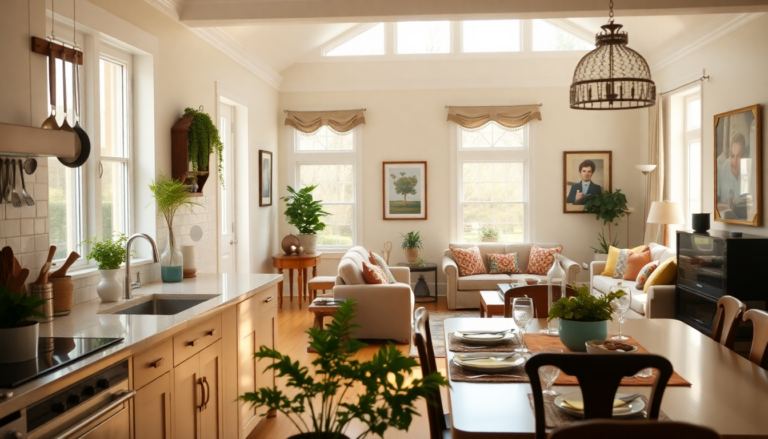Argomenti trattati
When we dive into cinematic storytelling, it’s fascinating how often the settings play as pivotal a role as the characters themselves. This is especially the case with the sequel to the beloved 2003 film Freaky Friday, cleverly titled Freakier Friday. As we reconnect with Tess and Anna Coleman, portrayed by Jamie Lee Curtis and Lindsay Lohan, the transformation of their family home weaves a compelling narrative thread that aligns beautifully with their character development. The creative process behind redesigning their iconic California residence not only reflects the characters’ growth but also pays homage to the original film.
Setting the Stage: The Importance of Home in Storytelling
The Coleman family home is more than just a backdrop; it’s practically a character in its own right. Both in the original and its sequel, the house serves as a vessel for the family’s journey, capturing their shared experiences and evolving relationships. In the sequel, production designer Kay Lee and her team looked back at the original film to retain elements that would resonate with fans of the first installment. “We wanted it to feel like the original house,” Lee explains, underscoring the importance of continuity in storytelling.
Choosing to keep the Colemans in the same home speaks volumes. While the characters have moved forward—Tess is now thriving as a therapist and author—the home remains a constant, symbolizing stability amidst change. The narrative suggests that instead of relocating, this couple opted to invest in their home through renovations, shaping a space that mirrors their journey together over the past two decades. Isn’t it interesting how our spaces can reflect our lives?
This approach to home design illustrates a key marketing principle: understanding and evolving with your audience. Just as the filmmakers aimed to honor the past while embracing the present, marketers must stay attuned to their target demographic’s shifting preferences and behaviors.
Design Choices: A Reflection of Character Development
In crafting the new interior spaces, the design team embraced a blue and white color palette, a refreshing change from the original’s warmer tones. This choice reflects not just the passage of time but also the blending of Tess and Ryan’s distinct styles as they built their life together. The revamped kitchen, with its bright cabinetry and spacious island, symbolizes a modern, functional space perfect for family life, moving away from the darker, more cramped cooking area of the past. Have you ever noticed how a room can transform your mood?
Moreover, the incorporation of nature-inspired wallpapers and ocean-themed decor subtly pays tribute to California’s coastal vibe. These visual storytelling elements enhance the characters’ connection to their surroundings while elevating the viewer experience. Such attention to detail can significantly impact audience engagement—an essential aspect of successful marketing campaigns.
Symbolism and Nostalgia: Weaving Deeper Connections
Beyond aesthetic choices, the new film is rich with symbolic details that deepen the narrative. For instance, the inclusion of mystical elements, such as third-eye motifs and celestial designs, adds layers of intrigue while connecting to themes of self-discovery and personal growth. These subtle touches invite viewers to engage more deeply with the characters’ journeys, much like a well-crafted marketing campaign encourages audiences to connect with a brand’s story.
Furthermore, the film serves as a nostalgic homage to Los Angeles, particularly the Palisades neighborhood, which has undergone significant changes. This aspect speaks to the emotional resonance that location can have in storytelling, paralleling how brands must consider their heritage and the emotional ties their customers have with them. How often do we feel a connection to places that hold our memories?
Conclusion: Lessons from Freakier Friday for Marketers
The evolution of the Coleman family home in Freakier Friday serves as a poignant reminder of the power of setting in storytelling. The film’s design choices not only reflect character growth but also engage audiences on a deeper level, much like effective marketing strategies that resonate with consumers. By prioritizing continuity, embracing change, and weaving in symbolic elements, marketers can create narratives that captivate and retain customer interest. Ultimately, the journey of Tess and Anna Coleman is not just a tale of a family; it’s a masterclass in the art of storytelling and audience connection. So, what stories do your surroundings tell about you?

